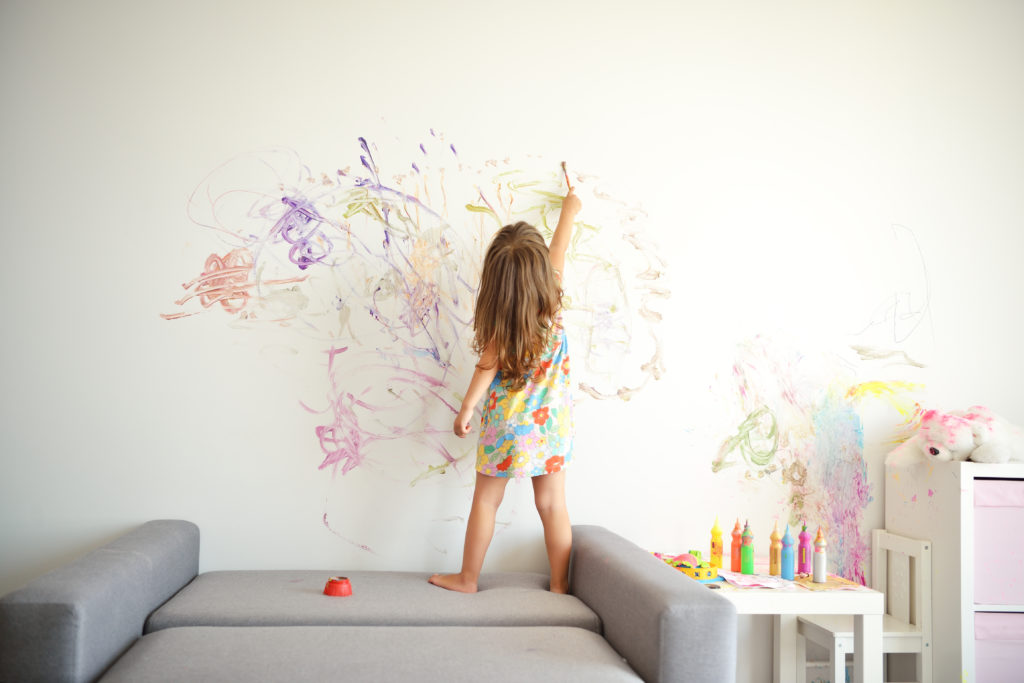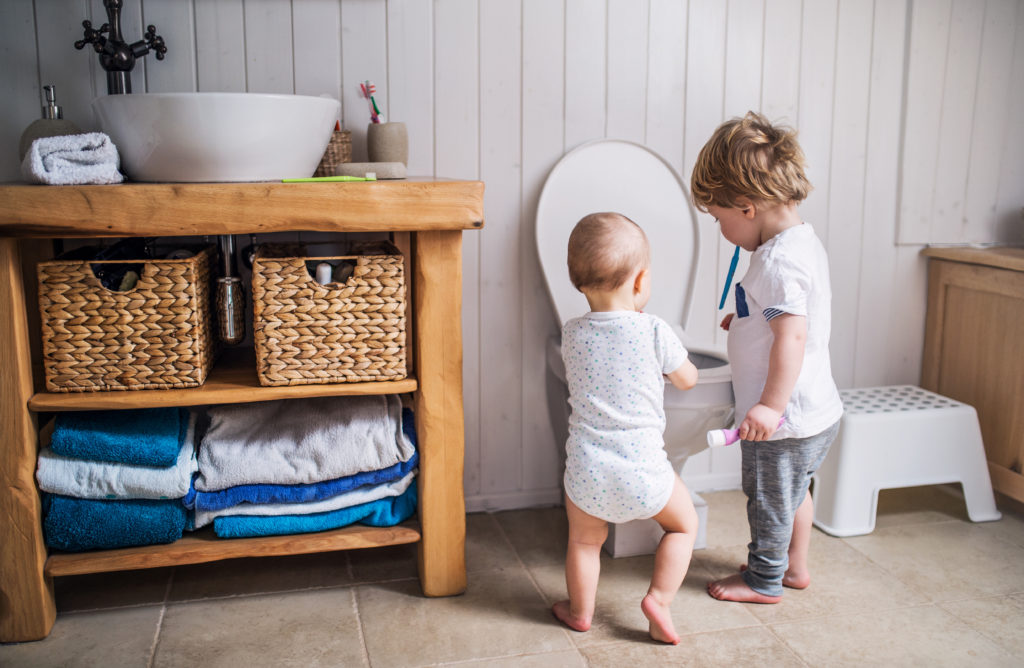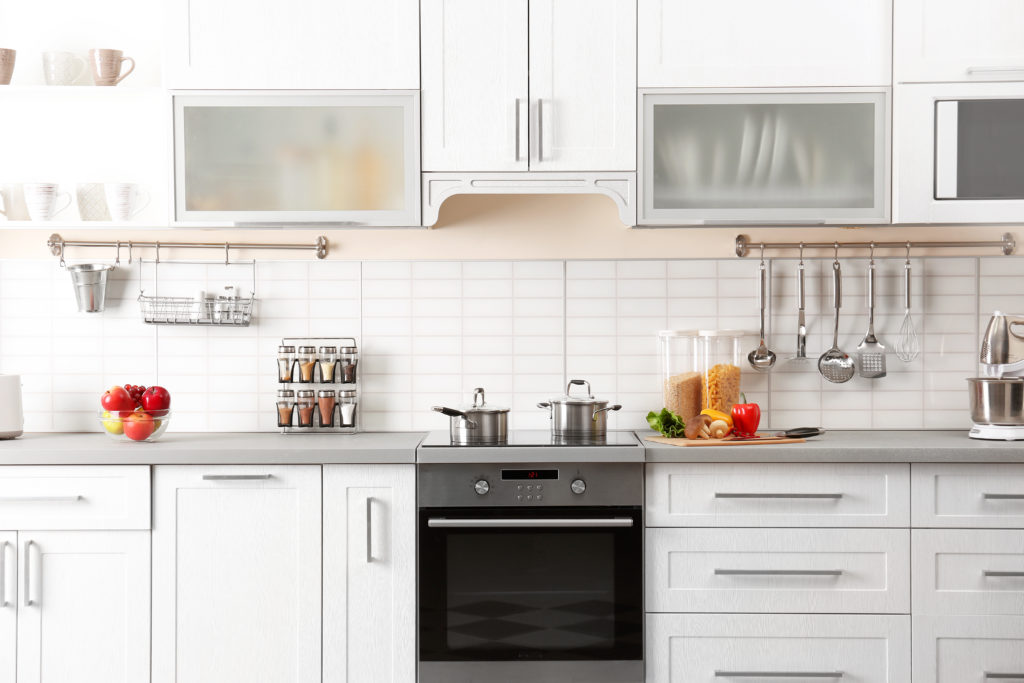
Spring and summer are a popular time to sell your home, but where do you begin? Most people will spruce up their property by decluttering and cleaning their house, but many people don’t realise how much impact their garden can have. Here are some easy ways to help ensure your garden adds value to your property before you put it on the market.
1. Get the basics right
The outside of your home is just as important as the inside when it comes to selling your home. An attractive garden can add value to your home while a poorly kept garden will detract from it. Tidying and doing some basic maintenance on your garden is a great way to start. A well maintained lawn will enhance the appearance of your home and complement the rest of your garden. Check if fences and trellises need repairing, trim shrubs and trees, cut back dead growth and clear away any debris remaining from the winter months.
2. Brighten it up with colour
Once your garden is shipshape, you’re ready to start turning it into something potential buyers will love. Potted flowering plants are a simple way to add colour to any size garden. Spring and summer are a great time to show your garden off to its full potential to help maximise your selling price.
3. Focus on first impressions
If time or budget are an issue, focus on the areas that buyers will notice first. Don’t underestimate the value of street appeal. First impressions really do count, so always start with your front garden and entrance area.
4. Add a point of difference
Why not add something that sets your property apart from the rest. A well organised garden shed, delightful play area for the children or lovely seating area in the garden can all go down a treat. Remember some features won’t appeal to all buyers, but if they are well presented and cared for, they will add value for the right buyer.
5. Freshen it up with paint & stain
If you’re on a tight budget, nothing freshens your property up like a good coat of paint or stain on fences, decks, sheds and other wood in the garden. Adding value to your home through the garden doesn’t have to break the bank.
6. Take living outdoors
If you are going to invest, spend your money on good quality patio, paving or decking. It will enhance the overall appearance of your outdoor space and encourage buyers to visualise themselves entertaining or dining alfresco. Good outdoor lighting also adds ambience and makes the space usable during the warmer evenings.
7. Style your garden with furniture
You wouldn’t show a room to a potential buyer without any furniture in it, so why show a garden without a table and chairs? The right furniture will help buyers imagine themselves sitting outside enjoying those sunny summer days ahead.
8. Make it feel secure
If the people viewing the house have pets or small children, they will want a garden that is fully secured. Investing in secure fencing, walls or gates, can make your property appeal to a wider range of potential buyers.
9. Keep it private
If your home is overlooked by other homes or gardens, you may want to add hedges or trees in key locations to provide privacy. Sails or retractable covers will also provide some privacy and have the added benefit of offering protection from the sun. Make sure they are clean and in good working order.
How to nail stylish, kid-friendly interior design room by room
Trust me when I say this: Kids. Destroy. Homes. So how do we go from the ‘double income, no kids’ sleek, curated home to a safe but stylish space catering to the messiest fingers and bucketloads of dribble we all come to ‘love’? It’s all about planning for the future and making the right choices, based on form and function. Ready? How can you make your family home stylish but comfortable, durable but not daggy!
The Kitchen
This zone is a nightmare to keep clean at the best of times. Short of hiring a full-time cleaner, there are a few steps you can take to ensure the heart of the home is beating smoothly and muck-free.
Anyone with little angels knows the chaos that is the breakfast/before school combo. It is truly a war zone. The best bet here would be a butler’s pantry, if you have the space, or a ‘butler’s cupboard’. This way, all the gear from the morning routine (toaster, bread, kettle, etc) can be easily packed away, leaving your space free of clutter.
Natural stone and marble benchtops are best left to the unencumbered homeowners (so, those without kids). They’re too easy to stain and too expensive to be forking out for the little ungratefuls. Instead, consider a composite stone such as Caesarstone, Smartstone or Essastone, as they are a mix of quartz and resin, and virtually indestructible. A new matt-finish laminate, AbsoluteMatte by Laminex, has a soft, sleek look and a fingerprintproof, scratch-resistant finish.
Grout can become a grime magnet on a tiled splashback. For an easier wipe-up, opt for a single-slab splashback in the same material as your bench or try Beaumont Tiles.
If you’re building from new, you’ll want your kitchen layout to enable the little tackers to run through, as they tend to do, without tripping you up. This is best achieved with a walk-around island bench or a double-entry galley kitchen layout. Keeping the foot traffic in your kitchen flowing is key to functionality.
Kids love a handle, and the best way to keep their grubby little paws away from your cabinetry is by installing push-to-open drawers and cupboards. At least it will take them a little longer to figure out how to get into every corner of the kitchen.
A mid-mount wall oven is the safest option when toddlers are underfoot. It will not only save your aching back, but also may save a burnt little hand or two by keeping the hot stuff out of reach.

The living area
This is where the kids’ 1.3 million toys will live – and for those of us without the bonus of a separate rumpus room, you’ll need some clever planning to keep the space looking somewhat presentable.
Furniture that serves two purposes can help keep all those toys packed away. Try an ottoman or a sofa with hidden storage inside, or even set aside a few cupboards in the entertainment unit for all things Peppa Pig and the gazillion books.
You can kiss goodbye that lovely velvet or linen lounge you had your heart set on. The cascade of vomit, avocado and smushed blueberries can destroy even the toughest of fabric couches, so leather is the way to go. Avoid the lighter leathers if you can, and make sure you clean it often and as recommended. Although leather can seem a bit cool, dress up your sofa with plush cushions and plenty of texture. If you’re buying a new lounge, pay that little bit extra for the ‘no questions asked’ warranty. You WILL use it.
Kids’ heads seem to be a magnet for sharp corners or a solid edge, so choose furniture that will ‘soften the blow’ every so often. Selecting a round coffee table, an upholstered arm on the sofa and cabinetry that extends all the way to the walls will save plenty of bumps on the heads of your little treasures.
Like the sharp edge of a table, kids are drawn to the TV that blares The Wiggles at 7.05am EVERY morning (can you feel the angst?). Mount your heavy TV on the wall and you’ll never have to worry about your kids pulling your expensive pride-and-joy down from a shelf, or hurting themselves in the process.

The bathroom
Bathroom routines are the bane of every mum’s and dad’s life. It’s either World War III as you even hint at the idea of personal hygiene, or the bathroom has been turned into the set of Waterworld, with toys strewn over the floor and litres of water lapping at your ankles. If we can’t prevent all this, at least smart design can quell the chaos.
A smart bathroom layout will be your best friend in here. A wet zone can contain all the water-based fun in one area, preventing you from getting wet feet when you brush your teeth at the end of the night. Try having the shower next to the bath and a glass wall dividing that space from the rest of the room.
Large-format tiles do away with excessive dirt-attracting grout, saving your Saturdays for fun things such as going to dance recitals and footy training instead of scrubbing the bathroom floor. YAY!
Ditch the whole shower/bath combo. Visually it’s a mess and it can be dangerous for both young kids and older folk. If you can afford the space, a separate shower and bath ticks plenty of boxes, looks so much better and caters to a busier household.
Glass doors can be a big hazard for kids with slippery hands and feet, so ditching the swinging glass door will be a godsend. Install a fixed glass panel and save on cleaning the hinged edges.
Dark grout on the floor of a tiled bathroom will hide so much more dirt and grime than a lighter grout. You could even take it a step further by committing to an epoxy grout (as opposed to the regular cement-based version). This resin-based grout is much hardier and will look better for much longer.

Blog from Homestolove.co.nz
How to add value in the kitchen without breaking the bank

If you’re planning on selling your home, the kitchen is a great place to start to add value. The kitchen is one of those spaces that can make or break the sale for many buyers, but before you make the decision to totally gut your kitchen and start again, here are some tips on how to get the best out of your existing kitchen without breaking the bank.
1. Ease and flow
First ask yourself if your kitchen functions well or are there some things about it that have always driven you crazy. Is the pantry too small, is the dishwasher too far from the sink or the rubbish bin, is there never enough storage or are the cupboards too high? Consider whether moving an appliance or rejigging those cupboards could significantly improve the flow of your kitchen. Also, think carefully about what you are going to include as chattels in the kitchen. Anything difficult to replace that is a key part of the kitchen should be included in the sale if possible.
2. A good clean and a lick of paint
One of the simplest ways to freshen up your kitchen is with a coat of paint. Keep it light, airy and neutral – be sure to pick a shade that works with your existing counters and cabinets. Ask for advice at your local paint shop or when in doubt, white is usually a safe bet. A professional clean is a worthwhile investment and should include ceilings and walls. Fly spots and food splatters are big detractors to an otherwise sparkling kitchen.
4. Declutter storage spaces
Make sure your cupboards and open shelves are clean, orderly and decluttered. Potential buyers will be looking inside your cupboards, and if they are overflowing it gives the impression that the storage space in your kitchen is inadequate. The same goes for the pantry. Pare back the contents until you have some open space on each shelf. Organise what’s left into a set of matching food storage containers rather than lots of open packets. To make space you may need to remove items from your pantry and store them in a box out of sight during open homes.
5. Let the light in
Consider the lighting in your kitchen – you’re looking for that bright, airy feel. Good lighting will make your kitchen seem bigger, brighter and will make it more functional too. No one wants to cook or entertain in a dark, poorly lit kitchen.
6. Help buyers imagine it as their own
Your kitchen may be very personal to you and your tastes, but now is the time to make it clean, simple and neutral. Buyers may not share your love of bright colours or ornate accessories. They’ll want to stamp their own personality on their new kitchen, so give them a clean canvas to work with if you want to appeal to a wide range of buyers.
Does your kitchen tick all the boxes?
☐ Looks and smells clean and fresh
☐ Appears spacious, light and airy
☐ Provides a neutral canvas and avoids out-of-date features
☐ Makes it easy to imagine working and entertaining in
☐ Is tidy and uncluttered yet still feels welcoming

Decluttering, minimising what you own and generally living a simpler life with less possessions is trending in 2019. Japanese ‘tidying celebrity’ Marie Kondo has kicked off a fascinating movement in ‘organising’ which has taken the world by storm and has now become a New Zealand phenomenon.
Even if you don’t like the idea of throwing away your worldly belongings, you might like the benefits which come along with owning fewer possessions. These include owning less to clean, less to organise, reducing stress, or even the possibility of having more money and energy to put into your hobbies and passions. Decluttering doesn’t need to be painful; in fact, it can be fun, so here are 7 creative ways to declutter your home:
1. Start small.
Give away one item each day. If you don’t let yourself get overwhelmed early into your declutteringjourney, then before you know it, you will have re-homed a week’s worth and then a month’s worth of items – and not miss them.
2. Fill one bin bag.
One of the most talked about decluttering techniques is to grab a simple large bin bag and see how quickly you can fill it. While much of what is collected may well be rubbish, there is also a chance it contains items of value that can
be donated to charity.
3. Think back to front.
Hang all the clothes in your wardrobe with the hangers in the reverse direction. After you wear an item, return it to the closet with the hanger facing the correct direction. After six months, you’ll have a clear picture of which clothes you have worn and which you haven’t, thus making it easier to pass on clothing.
4. Make a list.
Create a list of areas in your home to declutter; starting with the easiest – anecdotally this might be the collection of pens which are kept near a phone in your home or near the fridge where you write notes. Do you really need all those pens? Do they even all work? It’s worth seeing how this goes and taking your decluttering from here.
5. Take the 10-10-10 Challenge.
A simple task of locating 10 items to throw away, 10 items to donate, and 10 items to be returned to their proper home can be a really fun and exciting way to quickly organise 30 things in your house. Once you have done it, maybe you could encourage any other members of your family who live with you to join in.
6. Experiment with clothing.
Choose some key items of clothing and challenge yourself to only wear those pieces of clothing for a whole month. Challenging yourself in this way will enable you to change your perspective on how easy it is to live with less clothing. Once you’ve nailed this, it can flow on to other parts of your life and home.
7. Use your imagination.
It’s good to ask yourself what an item is worth to you before you throw it away. Although Marie Kondo poses the question ‘does it spark joy?’ we can use alternative ways to question something’s worth to us. You can also use this technique when buying new items to stop you making an unnecessary purchase. Just ask yourself if you really need the item or not.
No matter what way you choose to get started and whether it be one of these tips or one of countless others; the goal is to take your first step with excitement behind it. There is a beautiful world of freedom and a fresh way of living that’s hiding behind that clutter. How you remove it is up to you!
